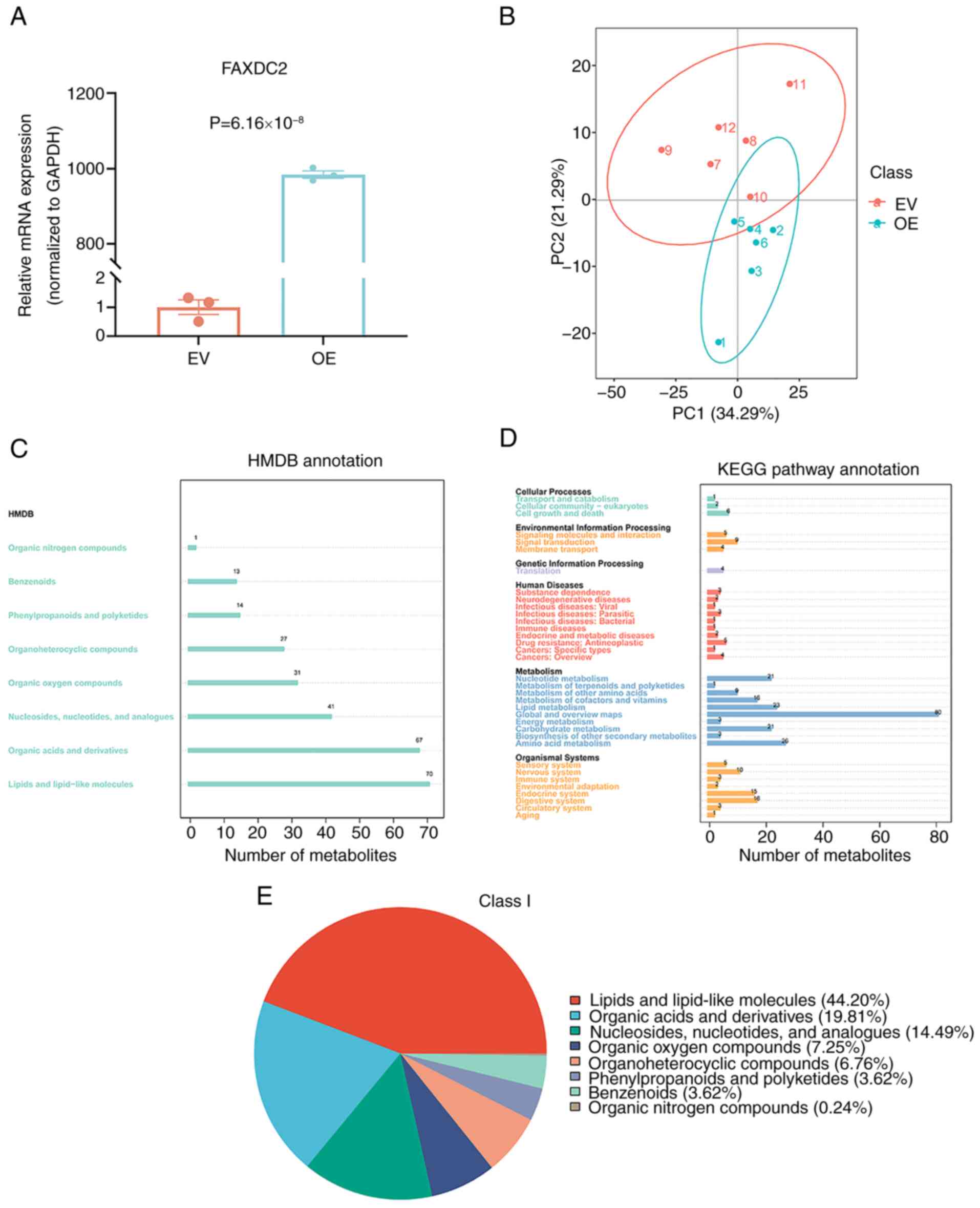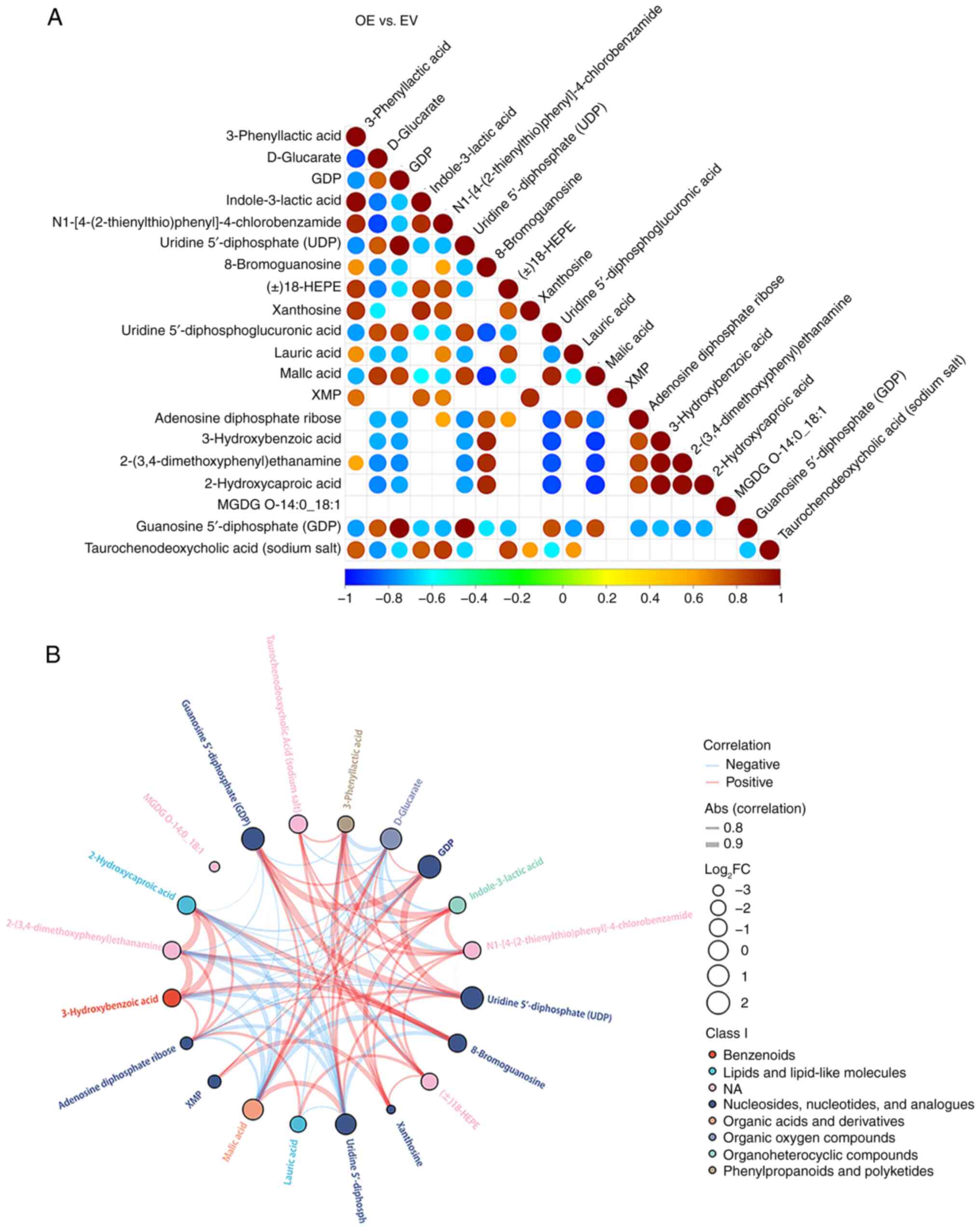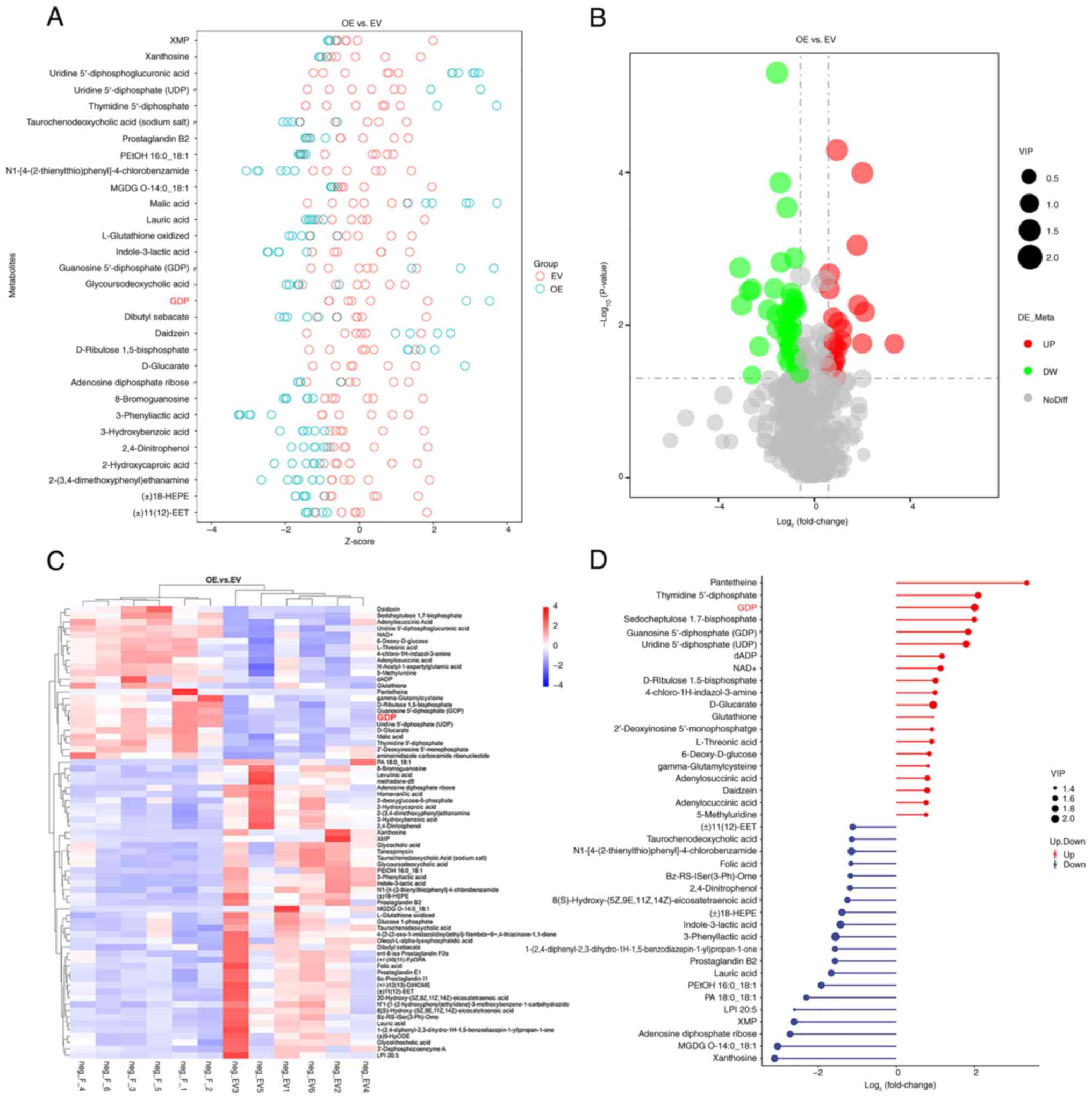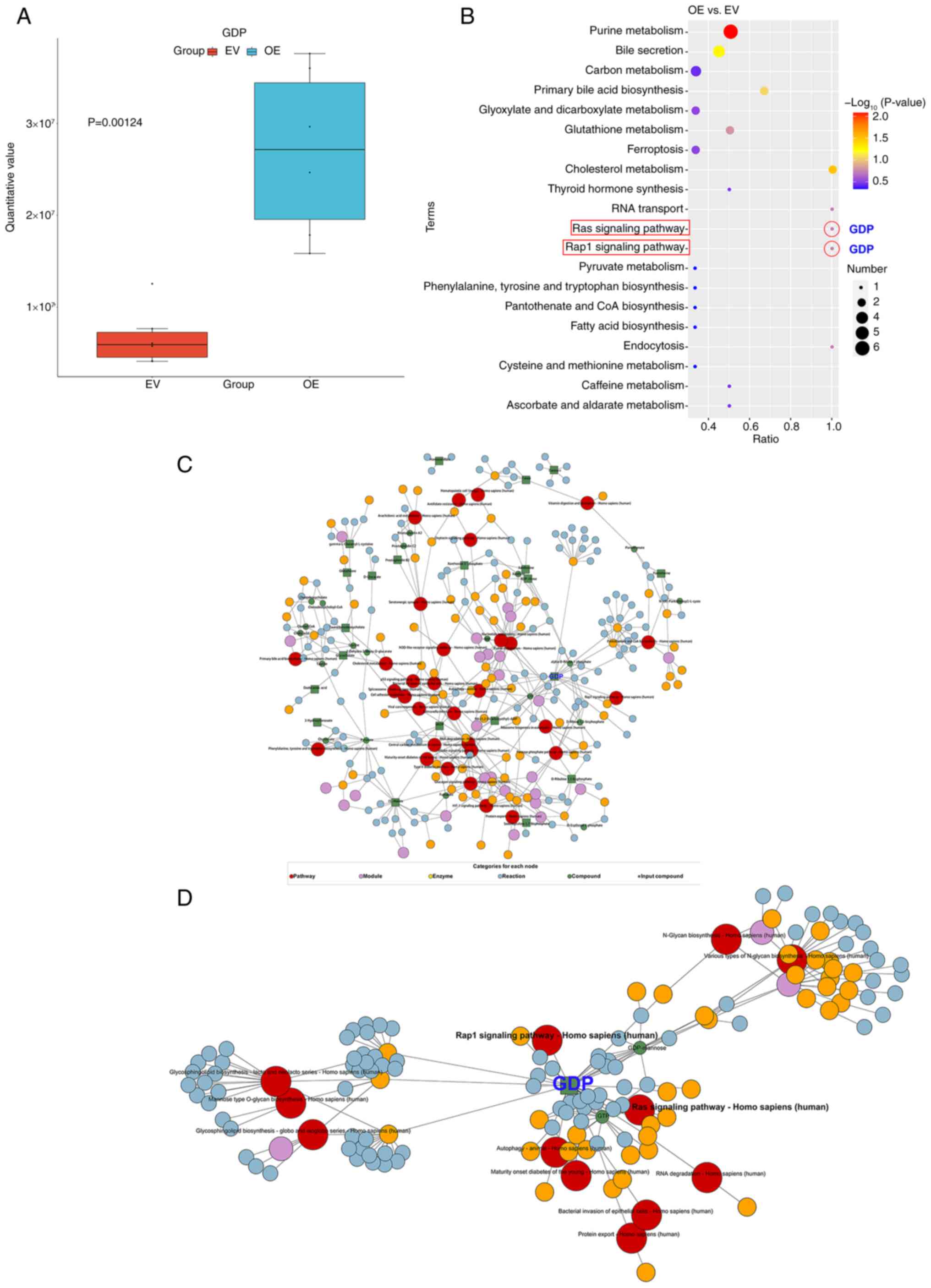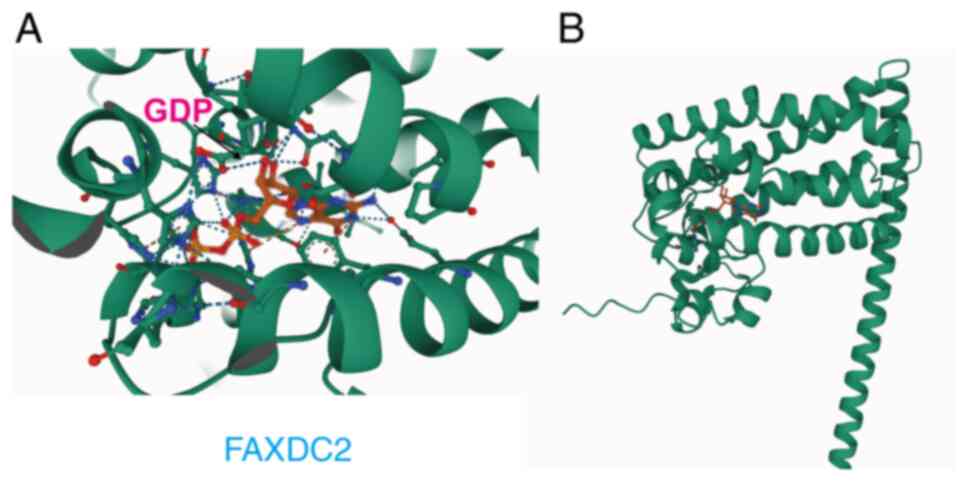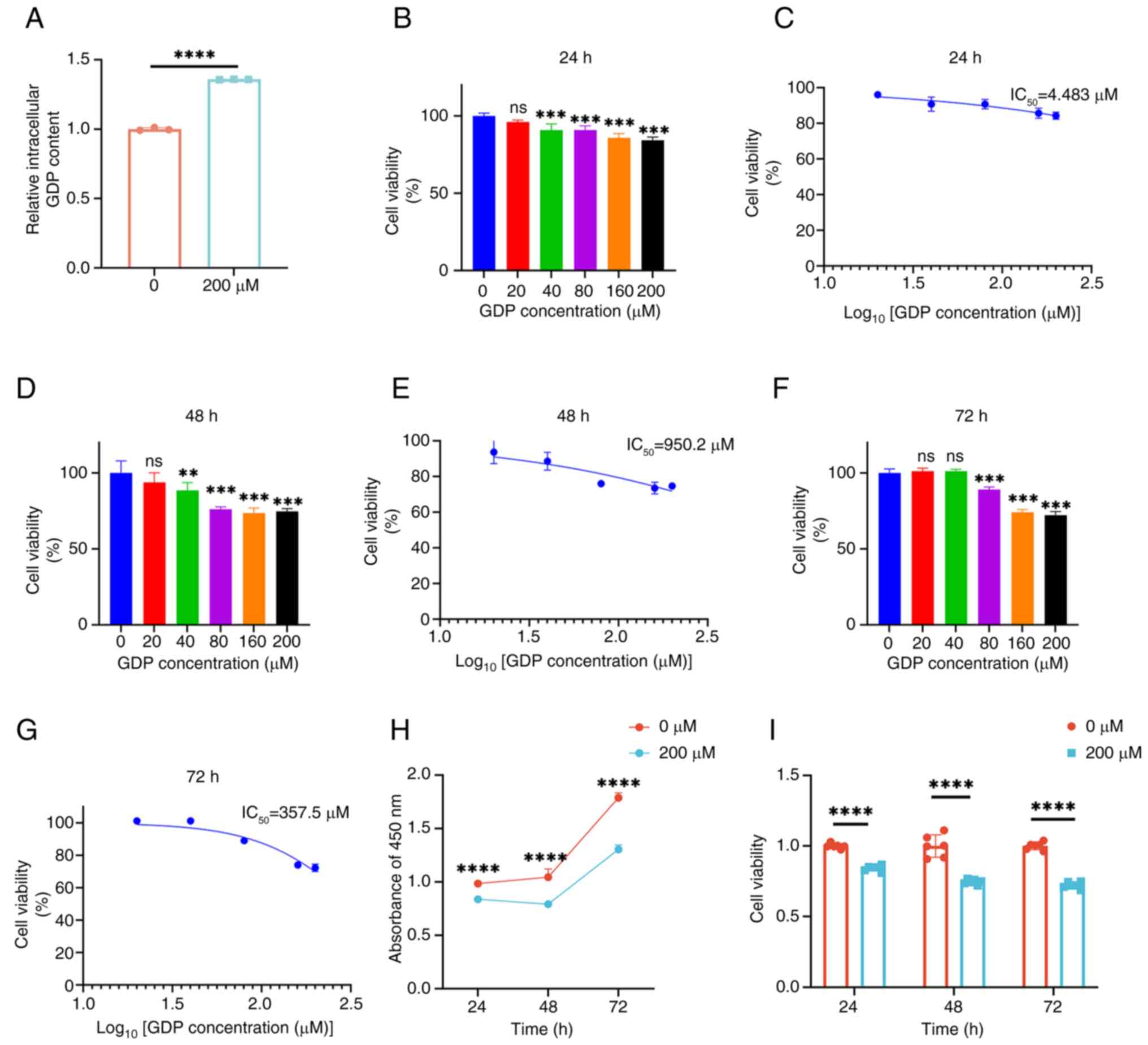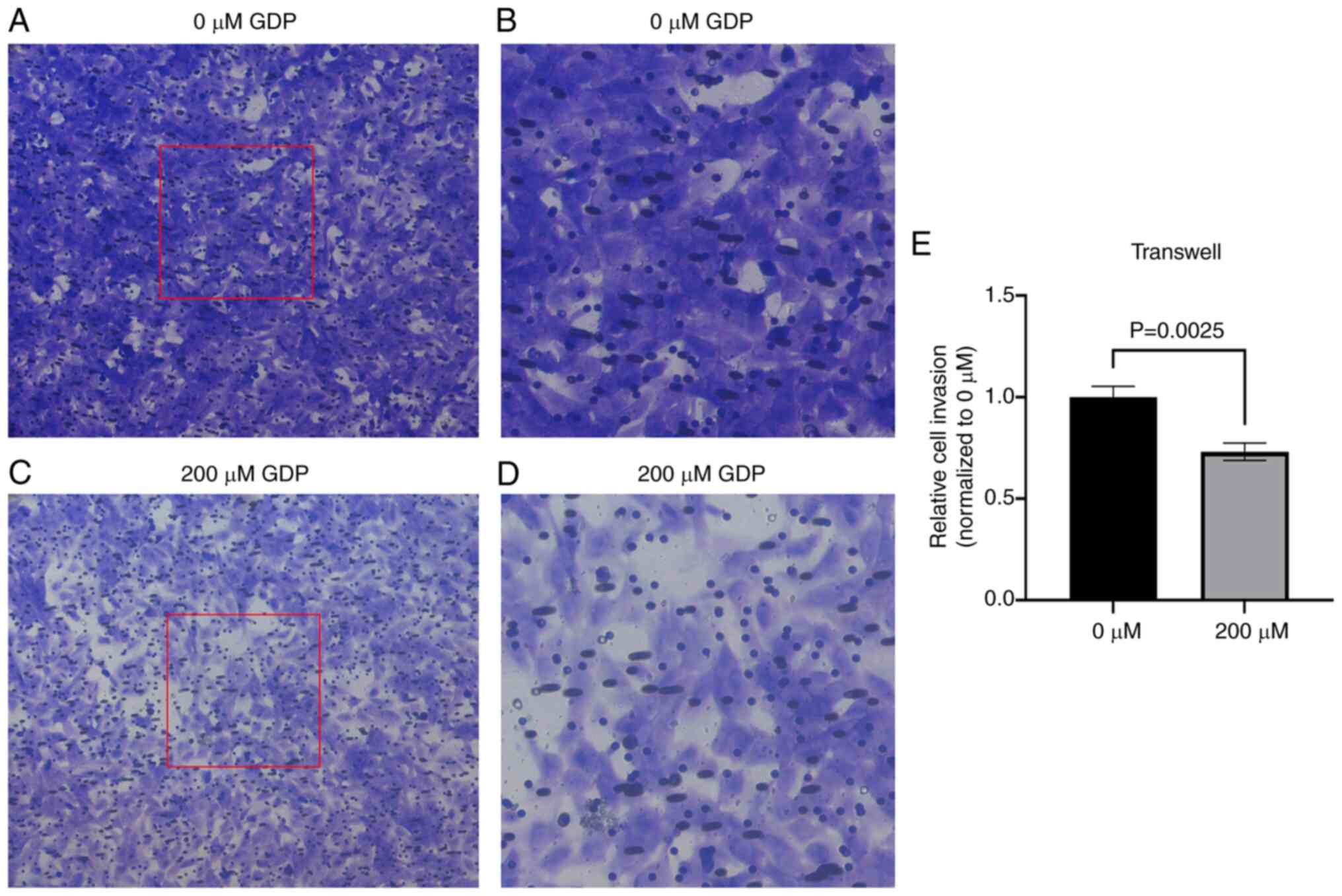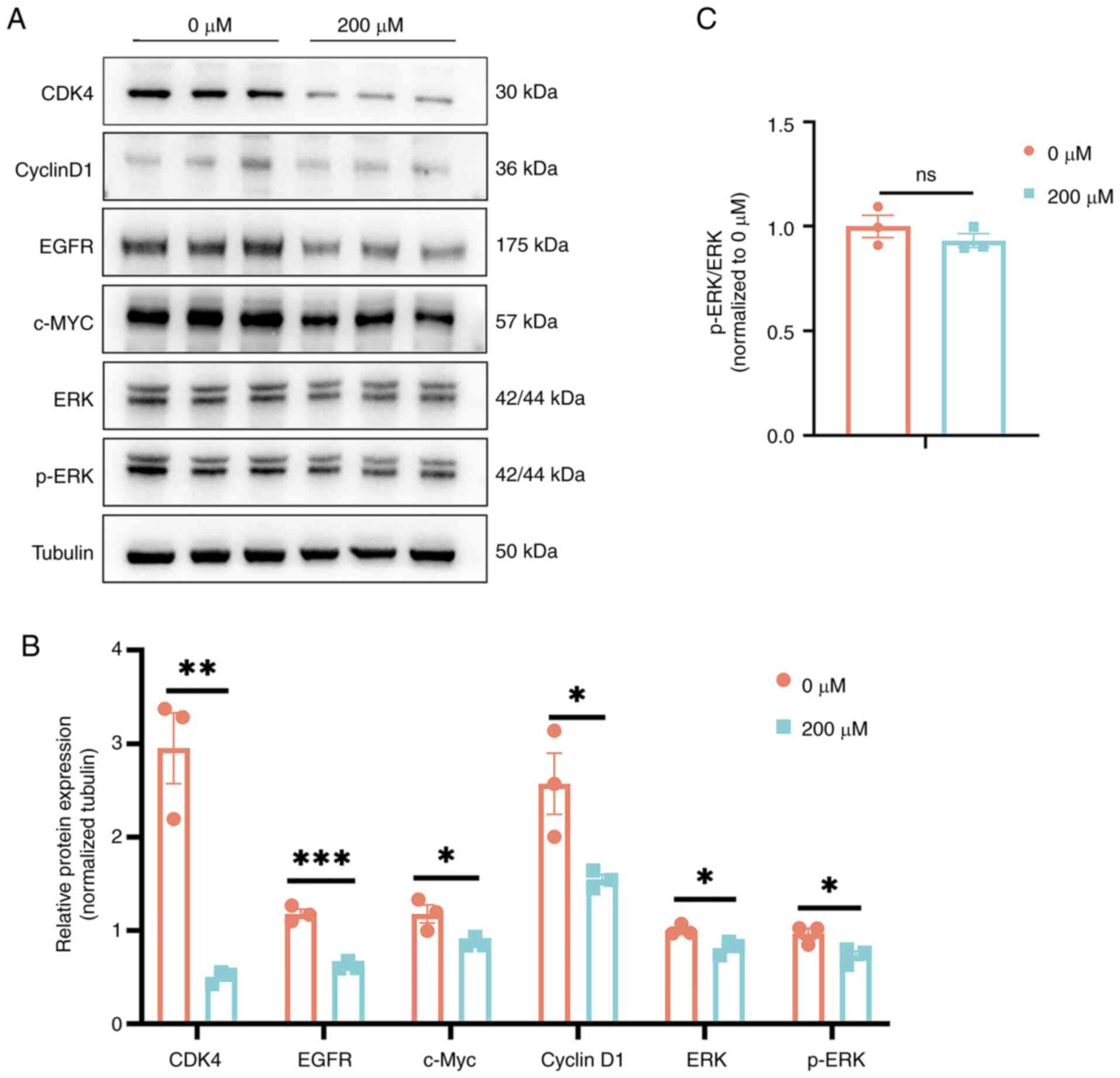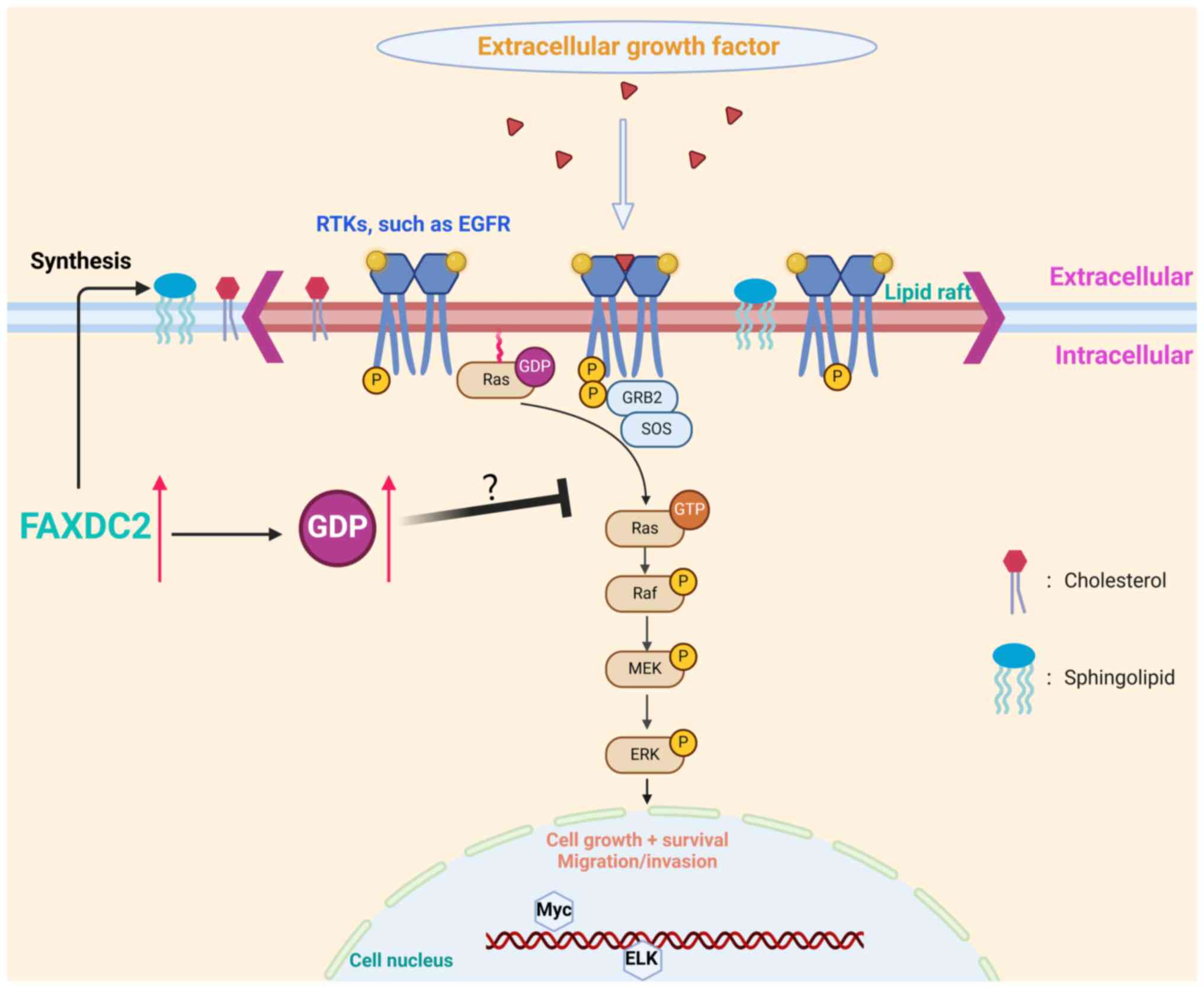|
1
|
Siegel RL, Miller KD, Wagle NS and Jemal
A: Cancer statistics, 2023. CA Cancer J Clin. 73:17–48. 2023.
View Article : Google Scholar : PubMed/NCBI
|
|
2
|
Gao S, Gang J, Yu M, Xin G and Tan H:
Computational analysis for identification of early diagnostic
biomarkers and prognostic biomarkers of liver cancer based on GEO
and TCGA databases and studies on pathways and biological functions
affecting the survival time of liver cancer. BMC cancer.
21:7912021. View Article : Google Scholar : PubMed/NCBI
|
|
3
|
Yang WS, Zeng XF, Liu ZN, Zhao QH, Tan YT,
Gao J, Li HL and Xiang YB: Diet and liver cancer risk: A narrative
review of epidemiological evidence. Br J Nutr. 124:330–340. 2020.
View Article : Google Scholar : PubMed/NCBI
|
|
4
|
Anwanwan D, Singh SK, Singh S, Saikam V
and Singh R: Challenges in liver cancer and possible treatment
approaches. Biochim Biophys Acta Rev Cancer. 1873:1883142020.
View Article : Google Scholar : PubMed/NCBI
|
|
5
|
Li S, Yin S, Ding H, Shao Y, Zhou S, Pu W,
Han L, Wang T and Yu H: Polyphenols as potential metabolism
mechanisms regulators in liver protection and liver cancer
prevention. Cell Prolif. 56:e133462023. View Article : Google Scholar : PubMed/NCBI
|
|
6
|
Raoul JL, Forner A, Bolondi L, Cheung TT,
Kloeckner R and de Baere T: Updated use of TACE for hepatocellular
carcinoma treatment: How and when to use it based on clinical
evidence. Cancer Treat Rev. 72:28–36. 2019. View Article : Google Scholar : PubMed/NCBI
|
|
7
|
Llovet JM, Kelley RK, Villanueva A, Singal
AG, Pikarsky E, Roayaie S, Lencioni R, Koike K, Zucman-Rossi J and
Finn RS: Hepatocellular carcinoma. Nat Rev Dis Primers. 7:62021.
View Article : Google Scholar : PubMed/NCBI
|
|
8
|
Luo X, Cheng C, Tan Z, Li N, Tang M, Yang
L and Cao Y: Emerging roles of lipid metabolism in cancer
metastasis. Mol Cancer. 16:762017. View Article : Google Scholar : PubMed/NCBI
|
|
9
|
Yi M, Li J, Chen S, Cai J, Ban Y, Peng Q,
Zhou Y, Zeng Z, Peng S, Li X, et al: Emerging role of lipid
metabolism alterations in cancer stem cells. J Exp Clin Cancer Res.
37:1182018. View Article : Google Scholar : PubMed/NCBI
|
|
10
|
Medes G, Thomas A and Weinhouse S:
Metabolism of neoplastic tissue. IV. A study of lipid synthesis in
neoplastic tissue slices in vitro. Cancer Res. 13:27–29.
1953.PubMed/NCBI
|
|
11
|
Ookhtens M, Kannan R, Lyon I and Baker N:
Liver and adipose tissue contributions to newly formed fatty acids
in an ascites tumor. Am J Physiol. 247:R146–R153. 1984.PubMed/NCBI
|
|
12
|
Yang H, Deng Q, Ni T, Liu Y, Lu L, Dai H,
Wang H and Yang W: Targeted Inhibition of LPL/FABP4/CPT1 fatty acid
metabolic axis can effectively prevent the progression of
nonalcoholic steatohepatitis to liver cancer. Int J Biol Sci.
17:4207–4222. 2021. View Article : Google Scholar : PubMed/NCBI
|
|
13
|
Wu D, Yang Y, Hou Y, Zhao Z, Liang N, Yuan
P, Yang T, Xing J and Li J: Increased mitochondrial fission drives
the reprogramming of fatty acid metabolism in hepatocellular
carcinoma cells through suppression of Sirtuin 1. Cancer Commun
(Lond). 42:37–55. 2022. View Article : Google Scholar : PubMed/NCBI
|
|
14
|
Wang W, Bai L, Li W and Cui J: The lipid
metabolic landscape of cancers and new therapeutic perspectives.
Front Oncol. 10:6051542020. View Article : Google Scholar : PubMed/NCBI
|
|
15
|
Beloribi-Djefaflia S, Vasseur S and
Guillaumond F: Lipid metabolic reprogramming in cancer cells.
Oncogenesis. 5:e1892016. View Article : Google Scholar : PubMed/NCBI
|
|
16
|
Du D, Liu C, Qin M, Zhang X, Xi T, Yuan S,
Hao H and Xiong J: Metabolic dysregulation and emerging
therapeutical targets for hepatocellular carcinoma. Acta Pharm Sin
B. 12:558–580. 2022. View Article : Google Scholar : PubMed/NCBI
|
|
17
|
Sun Y, Liu WZ, Liu T, Feng X, Yang N and
Zhou HF: Signaling pathway of MAPK/ERK in cell proliferation,
differentiation, migration, senescence and apoptosis. J Recept
Signal Transduct Res. 35:600–604. 2015. View Article : Google Scholar : PubMed/NCBI
|
|
18
|
Delire B and Stärkel P: The Ras/MAPK
pathway and hepatocarcinoma: Pathogenesis and therapeutic
implications. Eur J Clin Invest. 45:609–623. 2015. View Article : Google Scholar : PubMed/NCBI
|
|
19
|
Dimri M and Satyanarayana A: Molecular
signaling pathways and therapeutic targets in hepatocellular
carcinoma. Cancers (Basel). 12:4912020. View Article : Google Scholar : PubMed/NCBI
|
|
20
|
Peng Y, Song Y and Wang H: Systematic
elucidation of the aneuploidy landscape and identification of
aneuploidy driver genes in prostate cancer. Front Cell Dev Biol.
9:7234662021. View Article : Google Scholar : PubMed/NCBI
|
|
21
|
Zhang P, Ma K, Ke X, Liu L, Li Y, Liu Y
and Wang Y: Development and validation of a Five-RNA-Based
signature and identification of candidate drugs for neuroblastoma.
Front Genet. 12:6856462021. View Article : Google Scholar : PubMed/NCBI
|
|
22
|
Jin Q, Ren Y, Wang M, Suraneni PK, Li D,
Crispino JD, Fan J and Huang Z: Novel function of FAXDC2 in
megakaryopoiesis. Blood Cancer J. 6:e4782016. View Article : Google Scholar : PubMed/NCBI
|
|
23
|
Peng Z, Xu S, Zhang Q, Yang X, Yuan W,
Wang Y, Li Y, Zhu P, Wu X, Jiang Z, et al: FAXDC2 inhibits the
proliferation and invasion of human liver cancer HepG2 cells. Exp
Ther Med. 27:272024. View Article : Google Scholar : PubMed/NCBI
|
|
24
|
Livak KJ and Schmittgen TD: Analysis of
relative gene expression data using real-time quantitative PCR and
the 2(−Delta Delta C(T)) method. Methods. 25:402–408. 2001.
View Article : Google Scholar : PubMed/NCBI
|
|
25
|
Rao G, Sui J and Zhang J: Metabolomics
reveals significant variations in metabolites and correlations
regarding the maturation of walnuts (Juglans regia L.). Biol Open.
5:829–836. 2016. View Article : Google Scholar : PubMed/NCBI
|
|
26
|
Boulesteix AL and Strimmer K: Partial
least squares: A versatile tool for the analysis of
high-dimensional genomic data. Brief Bioinform. 8:32–44. 2007.
View Article : Google Scholar : PubMed/NCBI
|
|
27
|
Wen B, Mei Z, Zeng C and Liu S: metaX: A
flexible and comprehensive software for processing metabolomics
data. BMC Bioinformatics. 18:1832017. View Article : Google Scholar : PubMed/NCBI
|
|
28
|
Abramson J, Adler J, Dunger J, Evans R,
Green T, Pritzel A, Ronneberger O, Willmore L, Ballard AJ, Bambrick
J, et al: Accurate structure prediction of biomolecular
interactions with AlphaFold 3. Nature. 630:493–500. 2024.
View Article : Google Scholar : PubMed/NCBI
|
|
29
|
Wu M, Zhao Y, Tao M, Fu M, Wang Y, Liu Q,
Lu Z and Guo J: Malate-based biodegradable scaffolds activate
cellular energetic metabolism for accelerated wound healing. ACS
Appl Mater Interfaces. 15:50836–50853. 2023. View Article : Google Scholar : PubMed/NCBI
|
|
30
|
Adeva-Andany MM, Pérez-Felpete N,
Fernández-Fernández C, Donapetry-García C and Pazos-García C: Liver
glucose metabolism in humans. Biosci Rep. 36:e004162016. View Article : Google Scholar : PubMed/NCBI
|
|
31
|
Vetter IR and Wittinghofer A: The guanine
nucleotide-binding switch in three dimensions. Science.
294:1299–1304. 2001. View Article : Google Scholar : PubMed/NCBI
|
|
32
|
Traut TW: Physiological concentrations of
purines and pyrimidines. Mol Cell Biochem. 140:1–22. 1994.
View Article : Google Scholar : PubMed/NCBI
|
|
33
|
Ni T, He Z, Dai Y, Yao J, Guo Q and Wei L:
Oroxylin A suppresses the development and growth of colorectal
cancer through reprogram of HIF1α-modulated fatty acid metabolism.
Cell Death Dis. 8:e28652017. View Article : Google Scholar : PubMed/NCBI
|
|
34
|
Ali HR, Michel CR, Lin YH, McKinsey TA,
Jeong MY, Ambardekar AV, Cleveland JC, Reisdorph R, Reisdorph N,
Woulfe KC and Fritz KS: Defining decreased protein succinylation of
failing human cardiac myofibrils in ischemic cardiomyopathy. J Mol
Cell Cardiol. 138:304–317. 2020. View Article : Google Scholar : PubMed/NCBI
|
|
35
|
Cook SJ, Stuart K, Gilley R and Sale MJ:
Control of cell death and mitochondrial fission by ERK1/2 MAP
kinase signalling. FEBS J. 284:4177–4195. 2017. View Article : Google Scholar : PubMed/NCBI
|
|
36
|
Llovet JM, Villanueva A, Lachenmayer A and
Finn RS: Advances in targeted therapies for hepatocellular
carcinoma in the genomic era. Nat Rev Clin Oncol. 12:408–424. 2015.
View Article : Google Scholar : PubMed/NCBI
|
|
37
|
Wiesenauer CA, Yip-Schneider MT, Wang Y
and Schmidt CM: Multiple anticancer effects of blocking MEK-ERK
signaling in hepatocellular carcinoma. J Am Coll Surg. 198:410–421.
2004. View Article : Google Scholar : PubMed/NCBI
|
|
38
|
Yang J, Pan WH, Clawson GA and Richmond A:
Systemic targeting inhibitor of kappaB kinase inhibits melanoma
tumor growth. Cancer Res. 67:3127–3134. 2007. View Article : Google Scholar : PubMed/NCBI
|
|
39
|
Roy S, Luetterforst R, Harding A, Apolloni
A, Etheridge M, Stang E, Rolls B, Hancock JF and Parton RG:
Dominant-negative caveolin inhibits H-Ras function by disrupting
cholesterol-rich plasma membrane domains. Nat Cell Biol. 1:98–105.
1999. View Article : Google Scholar : PubMed/NCBI
|
|
40
|
Higgins EM, Bos JM, Mason-Suares H, Tester
DJ, Ackerman JP, MacRae CA, Sol-Church K, Gripp KW, Urrutia R and
Ackerman MJ: Elucidation of MRAS-mediated Noonan syndrome with
cardiac hypertrophy. JCI Insight. 2:e912252017. View Article : Google Scholar : PubMed/NCBI
|
|
41
|
Xu J, Hedberg C, Dekker FJ, Li Q, Haigis
KM, Hwang E, Waldmann H and Shannon K: Inhibiting the
palmitoylation/depalmitoylation cycle selectively reduces the
growth of hematopoietic cells expressing oncogenic Nras. Blood.
119:1032–1035. 2012. View Article : Google Scholar : PubMed/NCBI
|
|
42
|
Wang Y, Ji D, Lei C, Chen Y, Qiu Y, Li X,
Li M, Ni D, Pu J, Zhang J, et al: Mechanistic insights into the
effect of phosphorylation on Ras conformational dynamics and its
interactions with cell signaling proteins. Comput Struct Biotechnol
J. 19:1184–1199. 2021. View Article : Google Scholar : PubMed/NCBI
|
|
43
|
Li Q, Haigis KM, McDaniel A,
Harding-Theobald E, Kogan SC, Akagi K, Wong JC, Braun BS, Wolff L,
Jacks T and Shannon K: Hematopoiesis and leukemogenesis in mice
expressing oncogenic NrasG12D from the endogenous locus. Blood.
117:2022–2032. 2011. View Article : Google Scholar : PubMed/NCBI
|
|
44
|
Kan Z, Jaiswal BS, Stinson J, Janakiraman
V, Bhatt D, Stern HM, Yue P, Haverty PM, Bourgon R, Zheng J, et al:
Diverse somatic mutation patterns and pathway alterations in human
cancers. Nature. 466:869–873. 2010. View Article : Google Scholar : PubMed/NCBI
|
|
45
|
Garcia-Marcos M, Ghosh P and Farquhar MG:
Molecular basis of a novel oncogenic mutation in GNAO1. Oncogene.
30:2691–2696. 2011. View Article : Google Scholar : PubMed/NCBI
|
|
46
|
Leyme A, Marivin A, Casler J, Nguyen LT
and Garcia-Marcos M: Different biochemical properties explain why
two equivalent Gα subunit mutants cause unrelated diseases. J Biol
Chem. 289:21818–21827. 2014. View Article : Google Scholar : PubMed/NCBI
|
|
47
|
Mills KF, Yoshida S, Stein LR, Grozio A,
Kubota S, Sasaki Y, Redpath P, Migaud ME, Apte RS, Uchida K, et al:
Long-term administration of nicotinamide mononucleotide mitigates
Age-associated physiological decline in mice. Cell Metab.
24:795–806. 2016. View Article : Google Scholar : PubMed/NCBI
|
|
48
|
de Picciotto NE, Gano LB, Johnson LC,
Martens CR, Sindler AL, Mills KF, Imai S and Seals DR: Nicotinamide
mononucleotide supplementation reverses vascular dysfunction and
oxidative stress with aging in mice. Aging Cell. 15:522–530. 2016.
View Article : Google Scholar : PubMed/NCBI
|
|
49
|
Wang S, Liang X, Yang Q, Fu X, Zhu M,
Rodgers BD, Jiang Q, Dodson MV and Du M: Resveratrol enhances brown
adipocyte formation and function by activating AMP-activated
protein kinase (AMPK) α1 in mice fed high-fat diet. Mol Nutr Food
Res. 61:102017. View Article : Google Scholar : PubMed/NCBI
|
|
50
|
Pearson KJ, Baur JA, Lewis KN, Peshkin L,
Price NL, Labinskyy N, Swindell WR, Kamara D, Minor RK, Perez E, et
al: Resveratrol delays age-related deterioration and mimics
transcriptional aspects of dietary restriction without extending
life span. Cell Metab. 8:157–168. 2008. View Article : Google Scholar : PubMed/NCBI
|
|
51
|
Park SJ, Ahmad F, Philp A, Baar K,
Williams T, Luo H, Ke H, Rehmann H, Taussig R, Brown AL, et al:
Resveratrol ameliorates aging-related metabolic phenotypes by
inhibiting cAMP phosphodiesterases. Cell. 148:421–433. 2012.
View Article : Google Scholar : PubMed/NCBI
|
|
52
|
Bernier M, Wahl D, Ali A, Allard J,
Faulkner S, Wnorowski A, Sanghvi M, Moaddel R, Alfaras I, Mattison
JA, et al: Resveratrol supplementation confers neuroprotection in
cortical brain tissue of nonhuman primates fed a high-fat/sucrose
diet. Aging (Albany NY). 8:899–916. 2016. View Article : Google Scholar : PubMed/NCBI
|
|
53
|
Liang QX, Lin YH, Zhang CH, Sun HM, Zhou
L, Schatten H, Sun QY and Qian WP: Resveratrol increases resistance
of mouse oocytes to postovulatory aging in vivo. Aging (Albany NY).
10:1586–1596. 2018. View Article : Google Scholar : PubMed/NCBI
|



